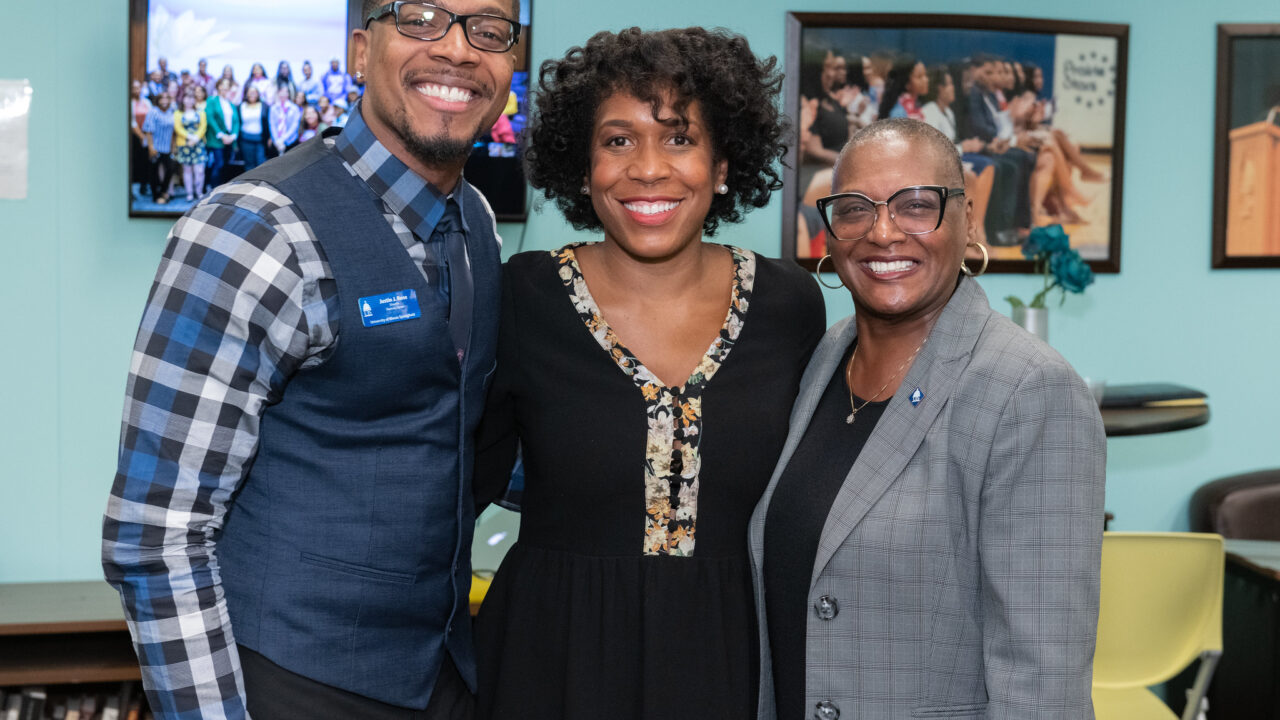Almost Half of Lieutenant Governors Are Women
New research shows the opportunities and challenges for women who are second in command. (Lt.) Governor Juliana Stratton by Illinois Springfield via Flickr / CC BY-SA 3.0
(Lt.) Governor Juliana Stratton by Illinois Springfield via Flickr / CC BY-SA 3.0
Originally published by The 19th.
Twenty-two of the nation’s 45 lieutenant governors are women, a development following the November midterm elections that has potential to create a pipeline of women leaders who could increasingly shape higher office.
Research released Wednesday by the Barbara Lee Family Foundation shows the opportunities and challenges for women who are second in command. Some are gaining more public prominence as they carve out a space separate from the governor they serve alongside.
Among the research findings: Most voters believe that women lieutenant governors are qualified to serve as governor, and the office can prepare these women for the role.
“They’re kind of the sleeper category in terms of gaining parity for women, because I don’t think people are really thinking about it too much,” said Amanda Hunter, executive director of the foundation, which does nonpartisan research on women in politics.
That is reflected in some of the new research, which is based on work by Lake Research Partners and Bellwether Research and Consulting. The groups surveyed 2,900 likely 2024 voters in January online to ask them about their views on lieutenant governors in general and the intersection of gender.
Voters are generally not familiar with lieutenant governors’ roles and responsibilities, which vary by state.
“Lieutenant governors’ role is really a blank slate in the eyes of voters, so they have an opportunity to define it,” Hunter said.
Just a few decades ago, lieutenant governors were relegated to a side role, including by the governors they served with.
Only 12 states have women governors, but 14 women were elected lieutenant governor in the 2022 midterm elections, including eight incumbents who were reelected. That brought the percentage of women in the role to near gender parity this year, an increase from the end of 2022, when 19, or 42.2 percent, of all lieutenant governors were women. One woman was appointed to the role.
According to Barbara Lee Family Foundation, most likely voters did not express a preference for the gender of a lieutenant governor. For those who did, men preferred a man lieutenant governor and women preferred a woman. The majority of voters who identify as Black, Latinx, AAPI and Native or Indigenous said they preferred a woman in the role.
Most said their friends and neighbors would likely have no gender preference as well. But of those who think their neighbors would have a preference, both men and women said they think their neighbors would prefer a man in the role.
“There’s still a little bit of an imagination barrier with some voters when it comes to seeing a woman lieutenant governor if they’re assuming that their neighbor would probably vote for a man over a woman,” Hunter said.
Just a few decades ago, lieutenant governors were relegated to a side role, including by the governors they served with. For women lieutenant governors, that appears to be shifting as more of them take a clear lead on policy priorities.
This could have ramifications for higher office: More than 70 lieutenant governors—including 12 women —have become governor since 1980.
Juliana Stratton, Illinois’ lieutenant governor and chair of the National Lieutenant Governors Association, a bipartisan organization, said while her role is loosely defined in the state constitution, she has worked to add several initiatives to her office. That includes work aimed at justice and equity, women and girls, and caregiving. Stratton is the first Black person to be elected lieutenant governor of the state.
“A skill set that I bring to the work that I’m doing is bringing people together to solve problems, to identify challenges, and then to make sure that we lift up communities and allow community voices to guide us in the way that we solve those challenges,” the Democrat said.
Other lieutenant governors are also working to take the lead and bring their lived experiences to the job.
In Arkansas, Republican Lt. Gov. Leslie Rutledge gained public attention following tornado damage in Arkansas several weeks ago, when she highlighted her experience as a former attorney general in offering guidance to residents.
In Minnesota, Democratic Lt. Gov. Peggy Flanagan gave a personal response to a state senator who said he didn’t know anyone who was experiencing hunger.
In California, Lt. Gov. Eleni Kounalakis has established a transgender advisory council and appeared on national television to talk about the state’s precautions following extreme flooding.
Stratton said she has seen firsthand how women lieutenant governors are stepping up in everything from supporting small businesses to addressing maternal health and mortality.
Kounalakis, a former U.S. ambassador to Hungary, is also vying for a higher office. On Monday, she announced that she intended to run for governor in 2026. Kounalakis, a Democrat, was elected California’s first women lieutenant governor in 2018 alongside Gov. Gavin Newsom, who is term limited. If elected, she would be California’s first woman governor.
Hunter said the new research shows voters want to know about a lieutenant governor’s individual accomplishments in office. It is more important for voters to know about what a lieutenant governor has done and their relationship with voters, rather than the lieutenant governor’s relationship with a governor.
“They just want to know that they’re working for the people,” she said.
Stratton said she has seen firsthand how women lieutenant governors are stepping up in everything from supporting small businesses to addressing maternal health and mortality.
“These are highly qualified women. They are women that are at the forefront, who often bring the kind of leadership skills that are really based in real thoughtful and strategic thinking — but also rooted in compassion and really listening to our communities,” she said. “I think that’s exciting. And I think that women who are serving in these roles can go as high as they want to go.”
Independent journalism is under threat and overshadowed by heavily funded mainstream media.
You can help level the playing field. Become a member.
Your tax-deductible contribution keeps us digging beneath the headlines to give you thought-provoking, investigative reporting and analysis that unearths what's really happening- without compromise.
Give today to support our courageous, independent journalists.









You need to be a supporter to comment.
There are currently no responses to this article.
Be the first to respond.